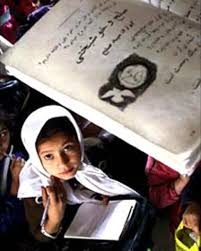Possible solutions to the ethnic problem in Afghanistan

The ethnic problem in Afghanistan is a complex and multidimensional problem that requires comprehensive and coordinated approaches to solve it. Some of the possible solutions to reduce tensions and ethnic problems in Afghanistan are:
- Strengthening national unity
- Education and awareness: promoting the culture of national unity through educational programs and media can help reduce ethnic prejudices.
- Shared history and culture: Teaching and emphasizing the shared history and culture of Afghanistan as a country with a rich heritage can strengthen the sense of unity and solidarity.
- Equitable distribution of resources and opportunities
- Balanced economic development: Creating job opportunities and economic development in different regions of the country can help reduce economic and social inequalities.
Equal access to services: Ensuring fair access of all ethnic groups to health, educational and social services can help reduce ethnic tensions.
-
Strengthening the inclusive political system
All-round political participation: Ensuring the fair participation of all ethnic groups in political processes, including at the local and national levels, can help strengthen the sense of representation and reduce ethnic tensions.
Free and fair elections: holding free and fair elections with the participation of all ethnic groups and social groups can help strengthen the legitimacy of the government and reduce ethnic differences. -
Respect for human rights and minority rights
- Protecting the rights of minorities: passing and implementing laws that guarantee the rights of minorities and prevent ethnic discrimination.
- Strengthening human rights institutions: Creating and strengthening independent human rights institutions that can support the rights of all citizens, regardless of ethnicity.
- Dialogue and compromise
- Inter-ethnic dialogues: holding dialogue and reconciliation meetings between representatives of different ethnic groups can help to better understand and resolve disputes peacefully.
Dispute resolution mechanisms: Creating effective mechanisms to resolve ethnic disputes through negotiation and mediation.
- Strengthening civil society
- Supporting civil society organizations: strengthening and supporting civil society organizations that work in the field of human rights and national unity.
- Encouraging civil participation: encouraging citizens to participate in civil and social activities that can help strengthen solidarity and reduce ethnic tensions.
7. Educational reforms
- Multicultural educational programs: Creating and implementing educational programs that respect cultural diversity and promote common values.
- Local languages: Strengthening the teaching of local and national languages as part of school curricula can help mutual respect and understanding between ethnic groups.
- Attention to security issues
- Strengthening local security: providing local security in different regions of the country, especially in regions where ethnic tensions are high.
- Fighting with extremist groups: confronting extremist and terrorist groups that exploit ethnic tensions for their own interests.
- Infrastructure Development
- Investment in infrastructure: Investing in public infrastructure in different regions of the country can help improve the quality of life and reduce inequalities.
- Access to public services: Ensuring fair access to public services such as health, education and transportation.
By implementing these solutions and comprehensive approaches, we can gradually reduce ethnic tensions in Afghanistan and move towards a more just and united society.